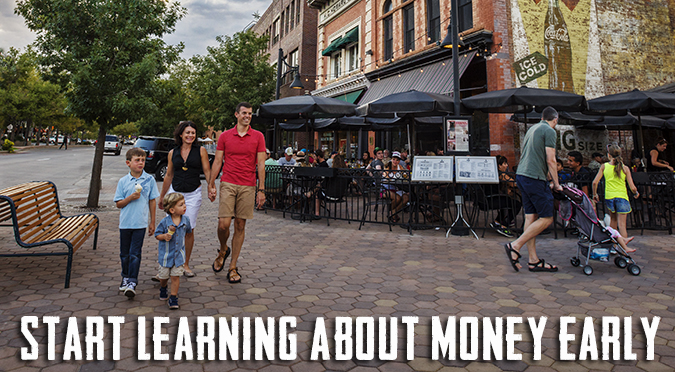If you couldn’t join us for last month’s presentation by Megan Moriarty on the history of women’s suffrage in Colorado, you can read about it in this blog post brought to you by the Museum of Boulder.
It may be hard to imagine a time when only men had the right to vote and women had to convince men to “grant” them this privilege. The women’s suffrage movement was a national issue, but the legal process was initially state-by-state, through public referendum or legislative action. Some territories, including Wyoming (1869), Utah (1870) and Washington (1883) enfranchised women in their founding constitutions, but existing states resisted. However, in Colorado, male voters approved a referendum on equal suffrage by a margin of 6,000 votes on Nov. 7, 1893—27 years before the matter was resolved nationally by the 19th Amendment to the U.S. Constitution, which was ratified in 1920.
Early efforts in the 1860s to give women the right to vote in the territory of Colorado went nowhere. But in the run-up to statehood, activists believed the state constitutional convention would be an ideal time to propose equal suffrage. The American Woman Suffrage Association sent Margaret Campbell and her husband John to Colorado to organize and do outreach. They recruited Albina Washburn, who helped establish the Colorado Woman Suffrage Association, in 1876. Margaret, Albina and others spoke at a committee meeting of the convention, but the delegates rejected equal suffrage. However, the women gained two male allies at the convention: Henry Bromwell, a prominent Republican, and Agapita Vigil, a Spanish-speaking rancher, who penned a dissenting report containing this eloquent language:
“On what principles is our Government founded? The principles following in the bill of rights…that all government of right originates from the people. It makes no difference who is superior. We do not classify our present voters in that way. The truth is, we are a human race. Part of us are men, part of us are women; both equal, each superior and each inferior; each is part and parcel of the same humanity.”
Subsequently, women gained the right to vote in school board elections and hold school offices. Additionally, the first state legislature scheduled an election in which a simple majority could approve a suffrage measure—avoiding the need for a constitutional amendment.
Activists for women’s suffrage began to organize throughout Colorado and went where the men were—mines, farms and ranches, even if it meant facing hostile crowds. Mary Shields traveled to mines in Caribou and Spanish-speaking communities in southern Colorado. Margaret and John Campbell traveled over 1200 miles via horse and buggy to talk to voters. And they imported talent—Susan B. Anthony and Lucy Stone were in Colorado in 1877 giving speeches to large crowds around the state.
In the October 1877 election, women lost that first popular vote—defeated by a margin of two to one. It would take the legislature 15 more years to authorize another referendum.
In 1879, the first women’s rights newspaper, the Queen Bee, was founded by Caroline Nichols Churchill. With her paper, and her travels and lectures promoting it, she spread the idea of equal suffrage around the state and region. Like many female activists at the time, she was passionate due to her own personal experiences. She believed in economic autonomy and political equality for women, probably due to her unhappy first marriage, which ended in her husband’s death, after which she retained her independence by sending her daughter to live with relatives and working to support herself.
In 1880, Mary Shields and Albina Washburn established the Colorado branch of the Woman’s Christian Temperance Union, with the explicit goal of gaining equal suffrage for Colorado women. During this period, suffragists worked throughout the state and with local groups to educate women, as well as promote social projects like setting up kindergartens and lunchrooms for working women.
In 1890, a group of six Denver women started the Colorado Equal Suffrage Association. Notably, this was an integrated group as one of the leaders was a black woman, Elizabeth Piper Ensley. Elizabeth was born in the Caribbean and worked in Boston as a teacher, where her involvement with local suffrage groups began. After moving to Colorado in the 1880s, she started organizing clubs for African-American women in Denver. Another founder of CESA was Ellis Meredith, a prominent newspaperwoman in Denver who wrote the column “Women’s World” in the Rocky Mountain News.
There were other political currents intersecting with the suffrage movement in the period before the second (successful) referendum. Following the rise of populism in the late 1880s, suffragists, including Albina Washburn, were critical to the formation of the Colorado People’s Party in 1890, which won key victories in the election of 1892. In 1893, the populist-led legislature called for the second referendum to be held in November. However, the economy was sinking, with approximately one-third of Denver’s adult men unemployed by August 1893. How did women win the right to vote just a few months later?
First, the activists for suffrage linked their campaign to economic reform. Women were able to convince men to vote for them using populist logic like: “The merciless power of the plutocracy that crushes you crushes us also.” The leaders of the movement also used mass media. Ellis Meredith had a newspaper column, Caroline Nichols Churchill had a whole newspaper, and Minnie Reynolds, another Denver newspaperwoman, made sure editors around the state had plenty of pro-suffrage copy on hand.
Also, the women of CESA sponsored T. Hanna in a run for the Denver School Board; in 1893, she became the first woman elected to public office in the state. That many women turned out to vote for her proved women were interested in and educated about politics, contrary to claims by anti-suffragists. And by 1893, the movement had strong ties with labor groups and unions, women’s clubs, local WCTUs and political parties. Their use of labor organizers was important because these allies took their cause to the far-flung mines. The women’s outreach led to a coalition of 50 affiliated organizations doing grassroots organizing.
Others worked on national connections. Ellis Meredith traveled to the Chicago World’s Fair in 1893 to convince Susan B. Anthony to send support to Colorado, arguing that if Colorado women got the vote, the rest of the West would follow. Susan dispatched the most capable AWSA organizer, Carrie Chapman Catt, to Colorado for the duration of the campaign. Suffragists also obtained endorsements from both the Populist and Republican parties.
Utilizing these methods and persevering after the loss in 1877, the women of Colorado convinced over 35,000 men to vote for equal suffrage in November 1893. At least 50 percent of eligible women voted in the first elections after being enfranchised. In 1894, Coloradans elected three women to the state legislature—Carrie Clyde Holly, Clara Cressingham, and Frances Klock—they were the first female state legislators in the country.
Female politicians like State Senator Helen Ring Robinson pushed through important social legislation including the women’s minimum wage law, pure food legislation and child labor and abuse laws. They created the first juvenile courts and mandated an 8-hour workday. Women also moved to outlaw alcohol, as they succeeded in turning Boulder dry by 1907 and state prohibition began in 1916. Of course, this was not always a popular argument for giving women the vote in other states!
Ellis Meredith, the newspaper woman, held several political positions in Colorado before moving to D.C. to advocate for women’s rights. In 1904, she spoke before the U.S. House of Representatives in favor of a national amendment for equal suffrage, where she said, “What does it mean to be an enfranchised woman? The real significance lies in…finding one’s own place in the great scheme of the universe.”
For more information on the history of the Women’s Suffrage Movement in Colorado, we encourage you to check out the Museum of Boulder’s extensive archives.
This post was written by the Museum of Boulder, in partnership with Elevations Credit Union.


